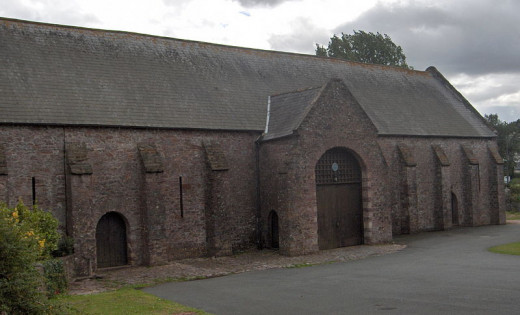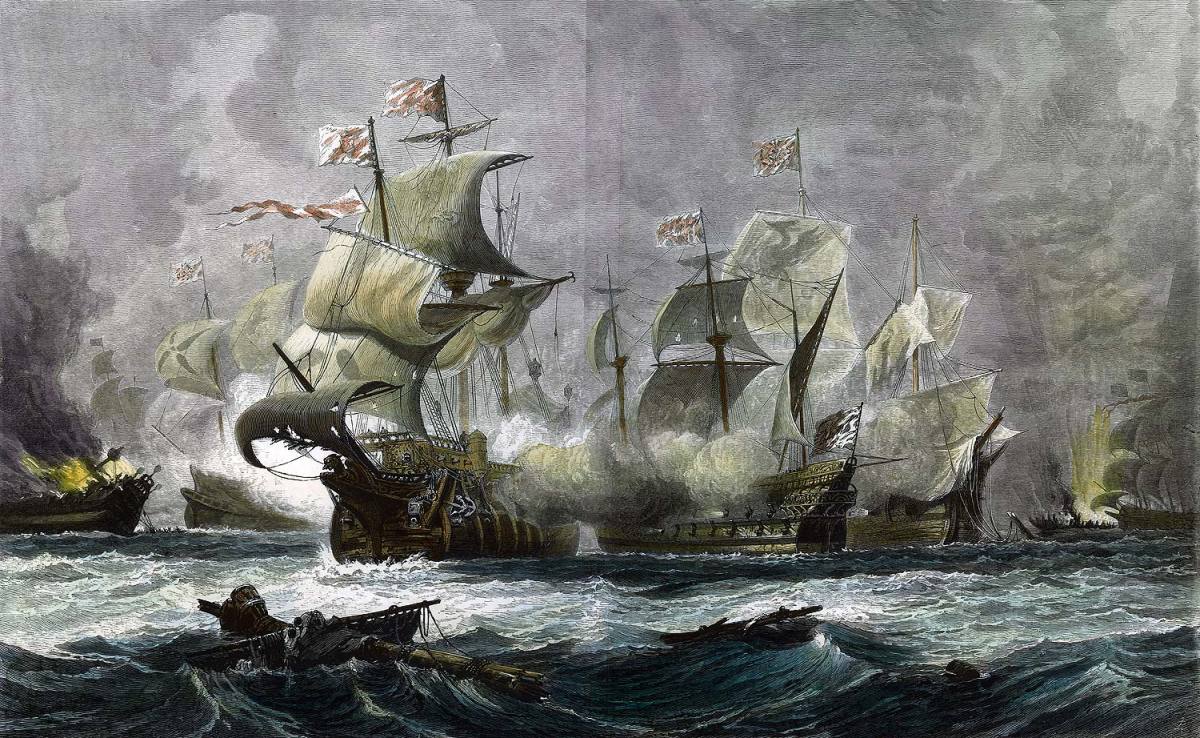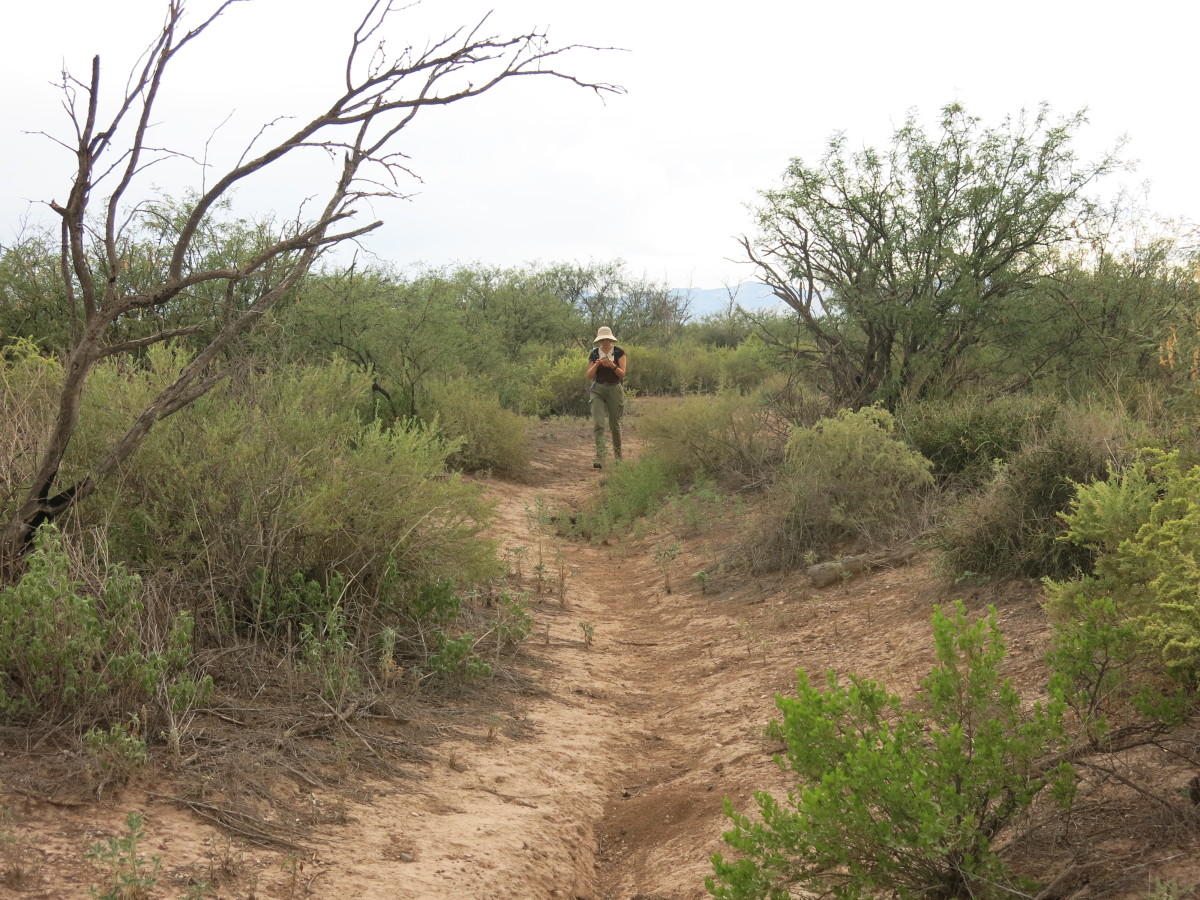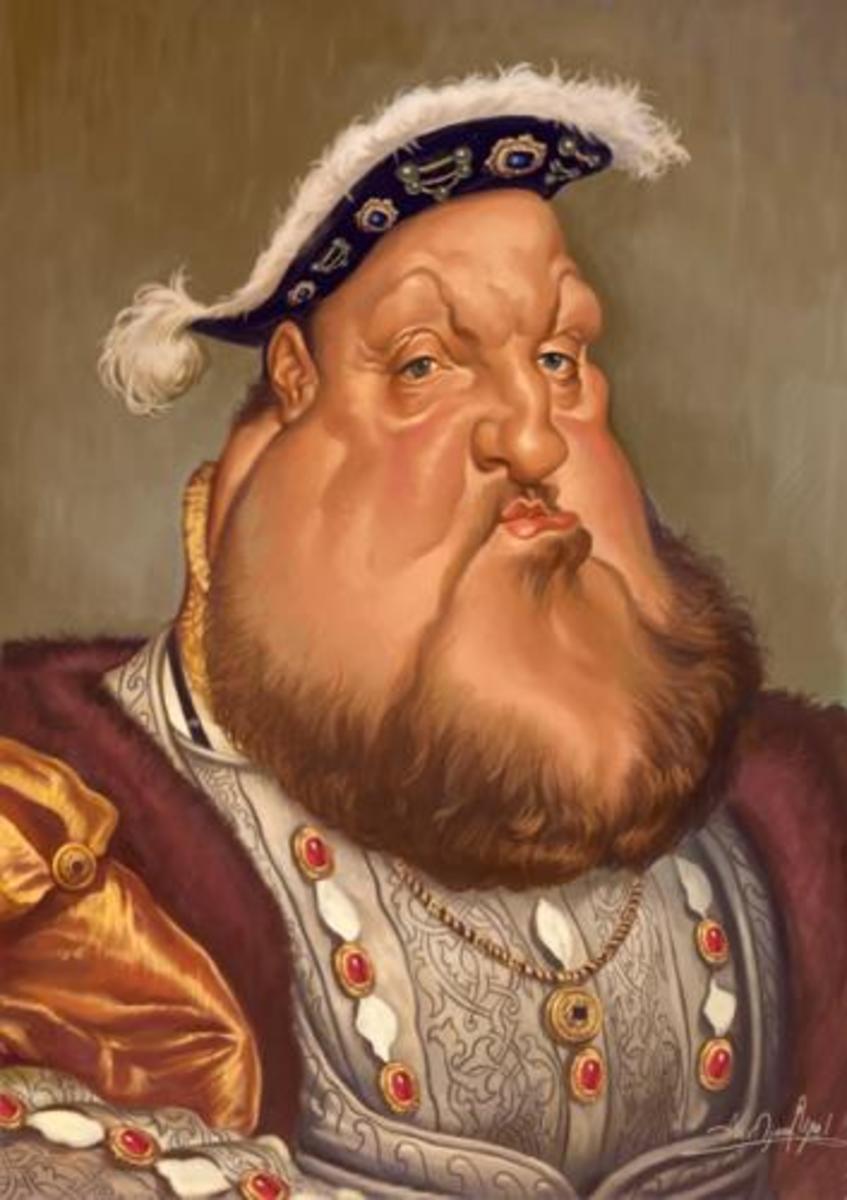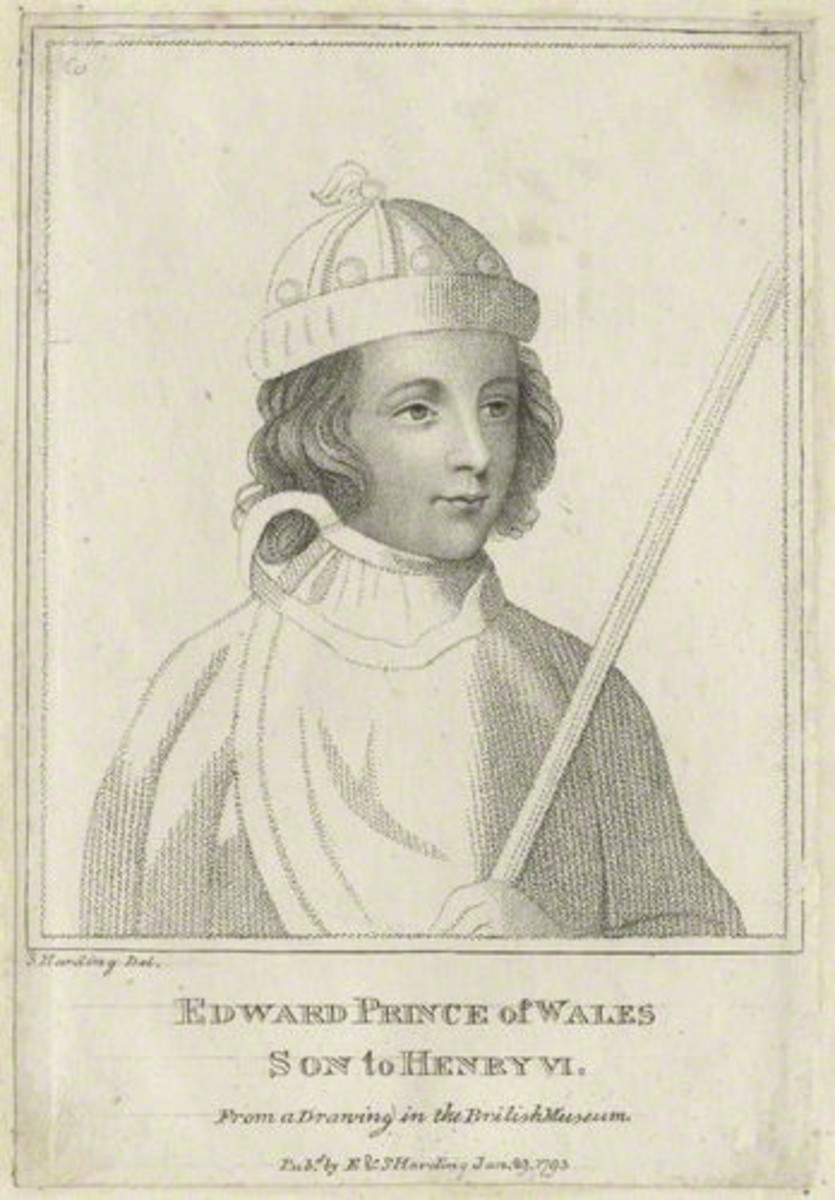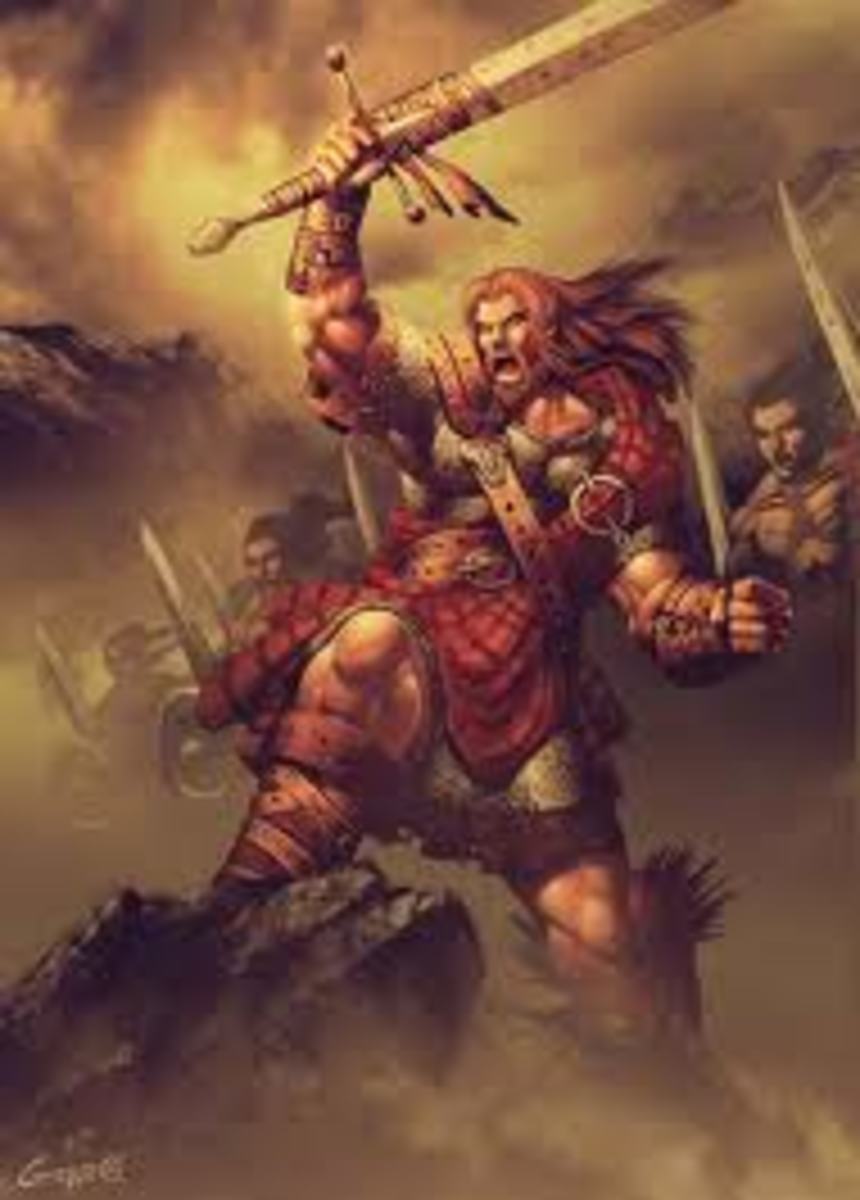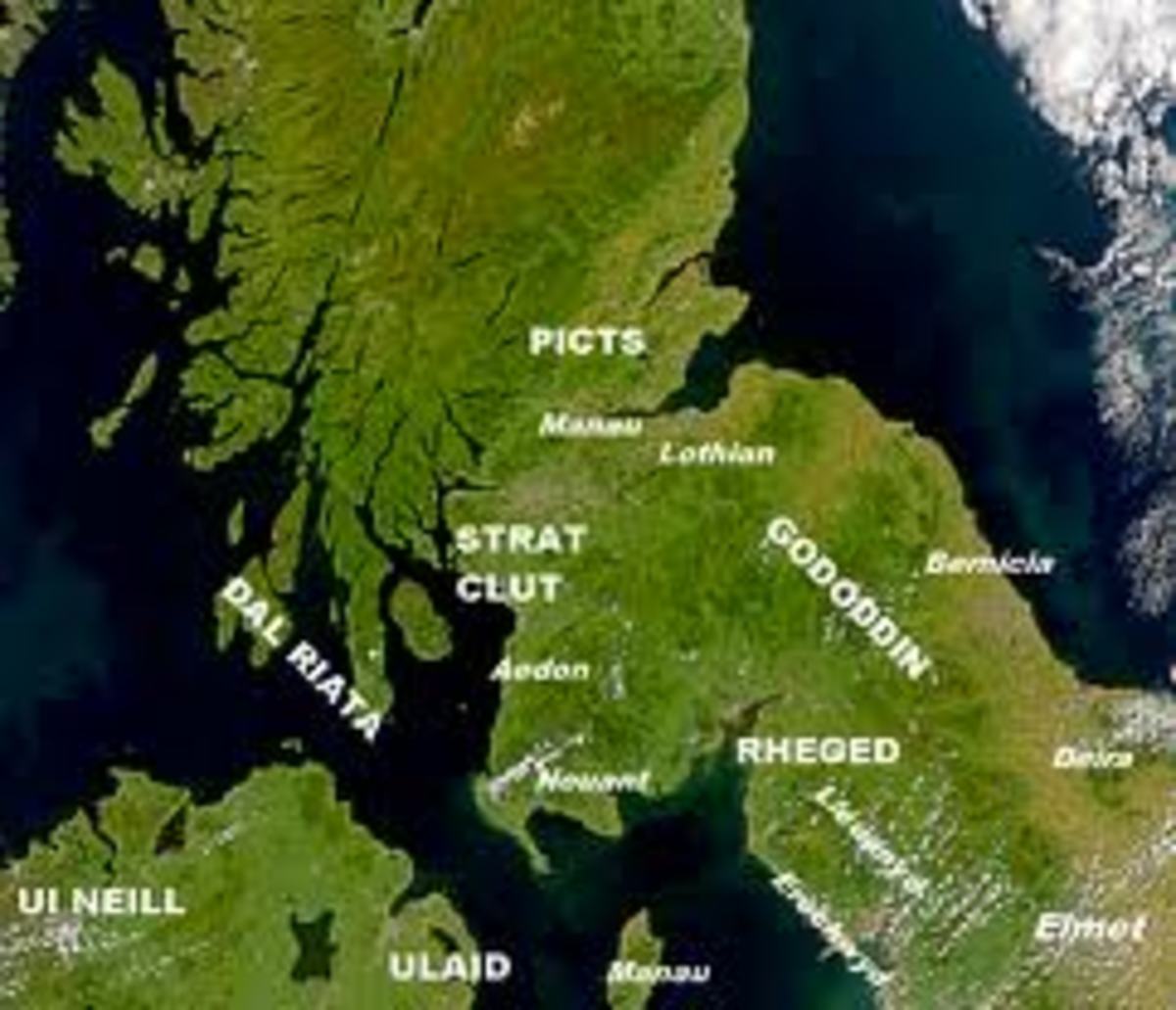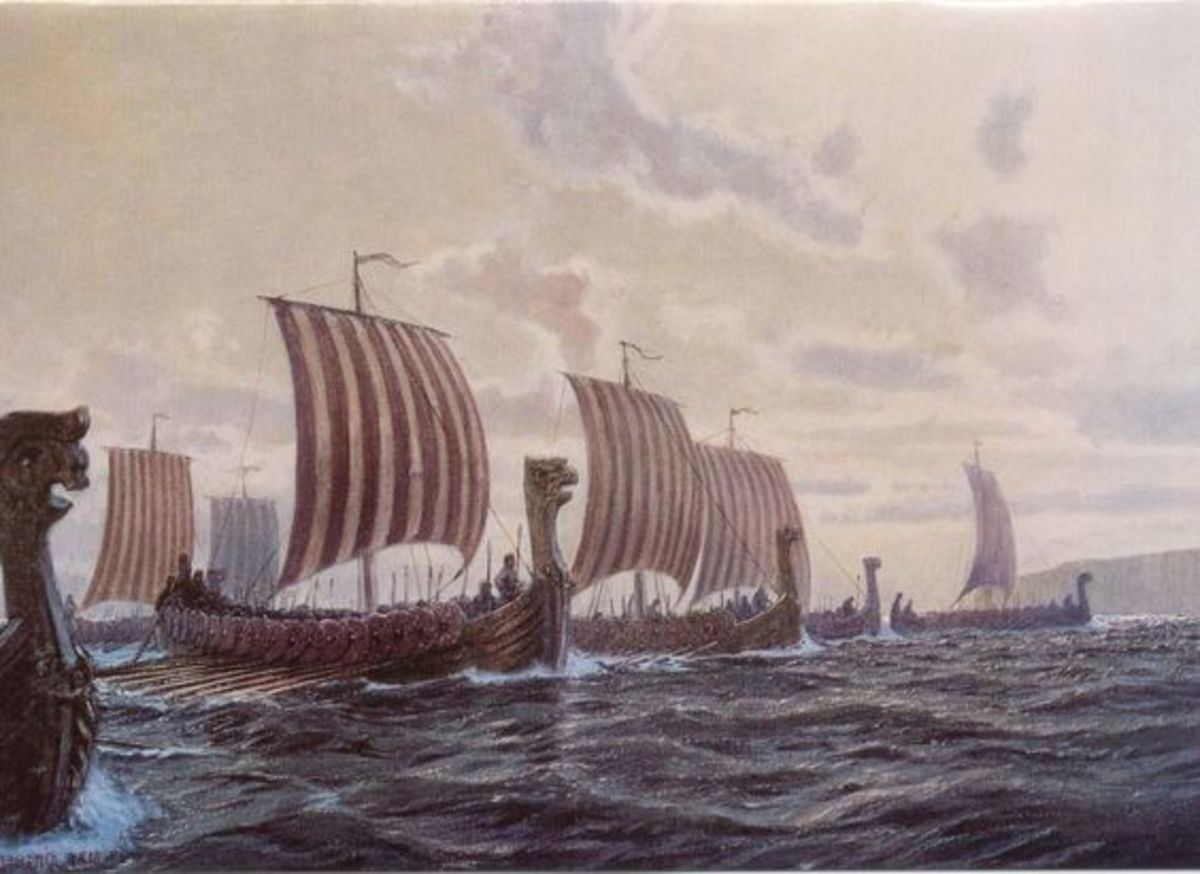- HubPages»
- Education and Science»
- History & Archaeology»
- History of Europe
The Anglo-Spanish War: The Spanish Armada
The Great Armada
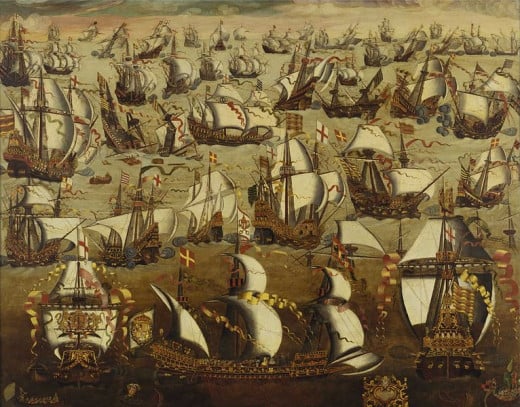
The Two Protagonists
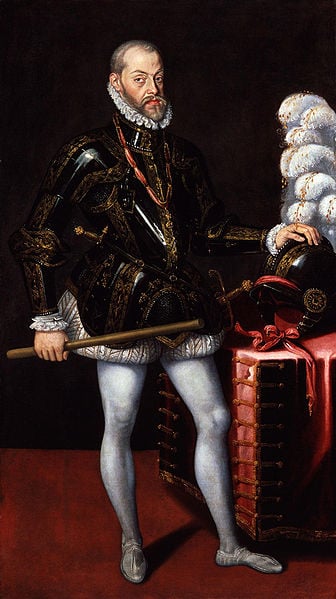
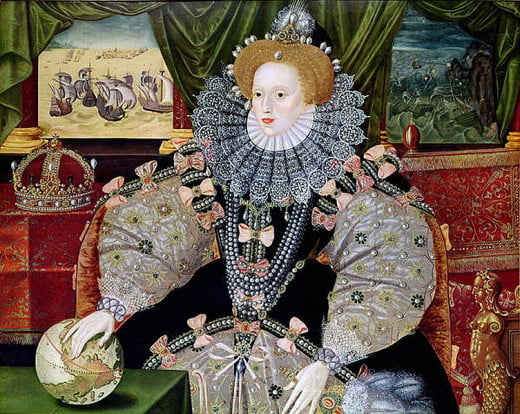
Introduction
Prior to 1585 King Philip II of Spain and Queen Elizabeth I of England had enjoyed a stable, if not wholly amicable relationship. But in that year, everything changed; the melting pot was the Netherlands, which at the time was controlled by the Spanish. The native Dutch of course, were determined to regain their freedom and raised rebellion against the occupying force. The English made the rather bold decision to ally themselves with the Dutch rebels and sent 4000 troops to land on the Dutch coast. In the same year, Francis Drake carried out a lightening raid on the Spanish coast. It was a declaration of war, if not in name, but in reality against Spain. The Duke of Parma, who was also the governor of the Spanish Netherlands suggested that he should land 30,000 men from his Army of Flanders directly on the coast of Kent, while the Marquis of Santa Cruz suggested sending over 500 ships, packed with nearly 100,000 troops against England directly from Spain. Santa Cruz had taken the Azores islands off the Portuguese in 1583 and had fought at Lepanto when the Holy League had crushed the Turkish fleet. Philip, being a rather cautious and hesitant man by nature chose a compromise between the two. He would send the Armada into the English Channel to escort Parma across from the Netherlands. This strategic compromise would prove decisive in the overall outcome of the campaign.
To gain time for English anti-invasion preparations the famous English buccaneer (or pirate as the Spanish referred to him) Sir Francis Drake set sail with 22 ships and on the 19th April attacked Cadiz where he burnt or captured 36 Spanish vessels at anchor, and in May raided the Azores. Drake’s dangerous presence forced Philip to delay the launch of the Armada until the following spring.
Philip had appointed Santa Cruz to command the Armada but the Marquis died in February 1588 in the midst of the preparations. Santa Cruz’s place as Captain-General of the Ocean Sea was taken by the 38 year old Don Alonso Perez de Guzman, the seventh Duke of Medina Sidonia, who was an experienced and efficient organiser and in no time at all he had the massive Armada project back on track. Whatever the Duke lacked in terms of real combat experience, he more than made up for it through his tactical and strategic skills, common sense, stern discipline and ruthless determination. He set about with tremendous energy to repair the damage wrought by Drakes’ raids and the chaos that Santa Cruz had left behind.
The Armada Sails
On the 1st April the Duke received Philip’s orders to set sail to Margate in support of Parma, who was to land at Ramsgate and march along the Thames to take London. Once this had been achieved Philip would force Elizabeth to make concessions. Philip very perceptively warned the Duke that the English would seek to avoid close combat and would use their superiority in naval gunnery to sink or damage the Duke’s ships.
On the 30th May 1588 the Armada, numbering some 130 ships with 2400 guns, 8000 sailors and 19,000 troops, set sail from Lisbon. The Armada may have looked formidable at a distance, but it was far weaker than it appeared. The Spanish treated war at sea like an extension of land warfare. Their experience of sea warfare was gained fighting the Turks in the Mediterranean. However, that was with galley fleets where ships were boarded by heavily armoured troops, which was why the Spanish carried so many troops aboard their ships. The Spanish hoped to close on the English ships, sink their grappling hooks into them and then capture the enemy ships by boarding.
The Armada Sets Off
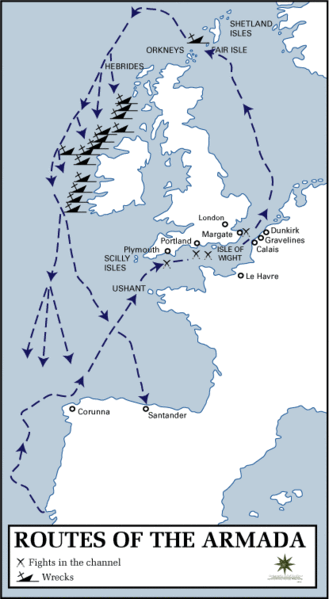
The English Commander
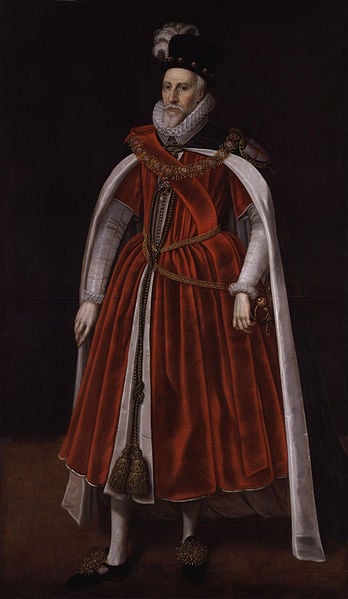
The English Hero
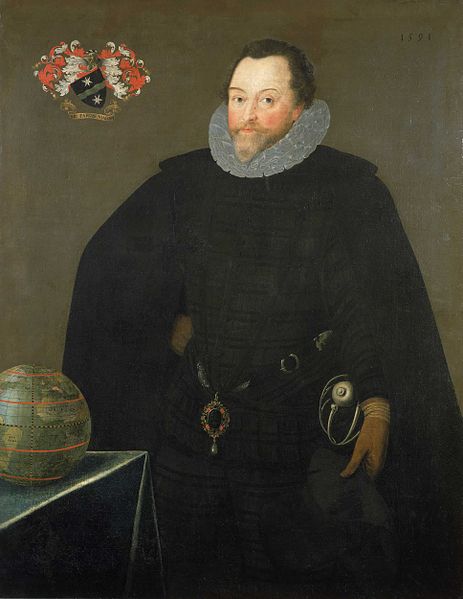
The English Fleet
The English on the other hand, sought to fight in a completely different way. They had learnt to build fast, sleek galleons with plenty of medium and heavy gun and the English would rely upon firepower and speed to outrun, outgun and outmanoeuvre the slower and clumsier Spanish ships. The English had several over advantages when compared to their enemy. They were fighting in defence of their country against a ruthless would-be invader who wished to impose his rule and religion upon them. This served to spur the English on. They also had the obvious advantage of fighting in home waters, the English Channel, which they knew very well indeed. The Spanish were totally unfamiliar with these cold, grey waters and as attackers were not as motivated.
The English also had something resembling professional and specialised crews and officers. The captains were the supreme commanders on their ships, while on the Spanish ships command was divided between the military and naval officers where it was often unclear who had precedence. This caused not only confusion but fanned the flames of discord between the officers and troops/crew. The English had a well trained corps of gunners on-board used to loading, firing and reloading their guns swiftly and efficiently despite the rolling decks, while the Spanish used their army artillerists to do this. The English rate of fire was, therefore, three to four times faster than that of their enemy’s.
Finally the ships themselves were quite different. Not even Philip could afford a standing fleet on the scale of the Armada so most of the vessels had been hired or lent by individuals or by friendly neighbours. Most of the Spanish tonnage was neither suited nor fitted out for a proper sea battle and the largest vessels (in the supply fleet) were not properly armed. By contrast the English vessels were purpose built warships, built for fighting in home waters, and for fast and intense fighting at short range. In 1588 the English had 24 newly concentrated or fitted out vessels in the Royal Navy and to this number could be added privateers and merchant ships. In total the English navy, under Charles Lord Howard of Effingham numbered some 105 vessels, with the main fleet anchored at Plymouth. At 52, Howard had in fact little experience of either sea warfare or high command but his subordinates such as Drake and Frobisher, had plenty from their numerous privateering raids against the enemy. Drake had divined, from whatever source that the Armada would sail up the Channel and try to neutralise the English, before Parma landed on the coast.
From the English point of view, it was so far so good, but they still had no idea where exactly Parma would land. Elizabeth had convinced herself that they would land in Essex placing her favourite Robert Dudley, Earl of Leicester, with the bulk of the English army (14,000-20,000 men) there. That left only 4000 poorly equipped levies to guard the Kent coast where in fact Parma’s veterans were going to land.
Signalling Danger
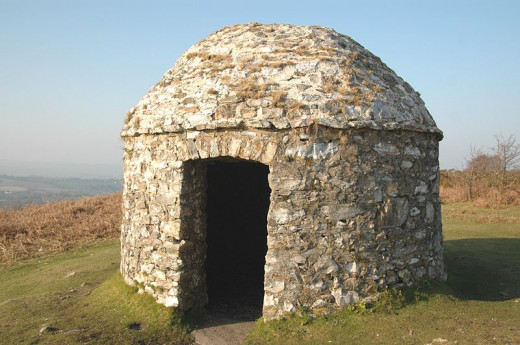
The Spanish Commander
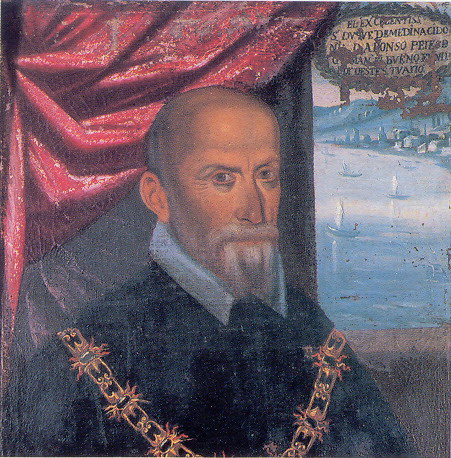
The First Day
Having been delayed at Corunna by a storm that temporarily scattered the huge fleet on the 19th-21st July, the Armada sailed slowly across the Bay of Biscay and ten days later entered the Channel. During the night of the 30th-31st July Howard’s fleet of 64 ships sailed across the path of the advancing Armada while Drake’s squadron was left inshore. The Duke formed his vast Armada into a huge crescent where he commanded the centre, which contained 90 ships. The left flank (20 ships) was under the command of Don Alonso Martinez de Levia and the right flank (also 20 ships) under Don Juan Martinez de Recalde. The whole battle formation spread out some 2 miles from the tip of the left horn to the tip of the right. It was an impressive and terrifying sight.
As no formal declaration of war had been made between England and Spain, Howard sent out the appropriately named Defiance to fire a token shot at the approaching Armada. This was the signal for battle to commence. As Howard’s fleet prepared for battle it was the turn of the Spanish to be perturbed as the English ships turned in a formation en ala, a line. This was the new flexible system of giving battle at seas, attacking the enemy using a broadside. The English were sensible and cautious, avoiding all close contact with the Spanish. They had good reason to be careful as the Spanish ships were packed with men armed with grappling hooks, ropes and hand grenades at the ready. In close hand to hand combat the lightly armed English sailors and crews stood little chance.
An Interesting Documentary On The Spanish Armada By The BBC
A Humorous Look At The Spanish Armada From The BBC
Further Engagements
The following day (1st August) Don Pedro de Valdes in the crippled Nuestra Senora del Rosario, having been abandoned by the rest of the Armada, was forced to strike on Drake on-board the Revenge. Drake’s many English detractors believed he had veered off during the night in order to seize the Nuestra Senora as a prize.
During the previous day’s fighting some of the Spanish captains had wavered in holding their position in the rigid battle formation and in the light of this, the Duke gave orders that any commander who broke ranks would be hanged without mercy for cowardice. Then he divided the command: he would lead the vanguard in person, while Levia brought up the rear, and to steady the nerves of his crews and officers he created two heavy battle groups with the largest and gunned vessels in his Fleet.
On the 2nd August, as the Armada was west of Portland Bill, Howard attacked again and the English found however, that fire had little effect. They fired 500 rounds at the San Martin without causing any serious damage. Howard broke off the battle since his ships were running low on ammunition; he noted furthermore that the Armada seemed, after all, invincible. By the evening the Duke contemplated sailing into the Solent to capture Portsmouth and use it as a base. Howard was determined to prevent this and divided his fleet into four squadrons, each commanded by himself, Drake, Hawkins and Frobisher. While the other three squadrons detained the Armada, Drake went out into the Channel, turned and attacked unexpectedly. The English forced the Armada to abandon its attack on the Solent and it drifted into the Channel again. A Spanish victory turned into a crucial English success. Nevertheless, the Armada was left unmolested for two days and reached Calais by the afternoon of the 6th August.
More On The Spanish Armada
- The Spanish Armada - Anglo-Spanish War Spanish Armada
An in-depth article that tells the full story of the Spanish Armada. - SparkNotes: Queen Elizabeth I: Against the Spanish Armada
A summary of Queen Elizabeth I's role in the defeat of the Spanish Armada. - Captain Cuellar's Adventures in Connacht and Ulster
This is an English translation of Captain Francisco Cuellar's recollections of his time sailing with the Spanish Armada.
Fireships
Calais was a dubious sanctuary for the hard pressed Spanish since the harbour was rather shallow and wide open. It had virtually no natural defences against an English attack. However, in the ongoing civil war in France between Catholics and Protestants, the port of Calais was in the hands of the former French governor, who was an ardent Catholic. Unsurprisingly he welcomed the Armada with open arms. That same evening Parma’s courier arrived by pinnace from his headquarters with the grim news that he would not be ready for another six days. The Duke realised that that the English and their Dutch allies with 140 vessels hovering off the coast would be most unlikely to give them that long.
His hunch was right as Howard had called a Council of War aboard his flagship the Ark Royal during the morning of the 7th August where it was decided to send some eight Fireships against the anchored Armada. Howard hoped to spread confusion and disorder thus enabling the English to move to point blank range and blast the Spanish vessels. His scheme went according to plan. The Duke had suspected the English would launch an attack with Fireships and posted lookouts so when the attack was launched during the night of the 7th/8th August two of the English craft were intercepted and ran aground. That left six that managed to get through. As the English had loaded the vessels’ gun barrels with double shot the resulting explosion, the smoke and fire was a tremendous sight and instantly spread panic and fear throughout the crews. Most captains of the Armada cut their cables in a wild and thoughtless scramble to get away and save their skins. This was despite the Duke’s orders to save the anchors and return to their previous positions once the attack was over.
By dawn on the 8th August the Duke was left with his flagship and only four escorts to protect him. Little by little the vessel returned with the heavily armed galleons protecting the scattered Armada’s rear as the Spanish vessels reformed. The stark truth, however, was that the English had them where they wanted them, strung out along the shallow coastal waters of Flanders. At last the English could use their superior firepower at point blank range with devastating effect. The battle of Gravelines (8th August) was fought in the shoal waters between Gravelines and Ostend, lasting nine hours. The San Martin received 200 shots to the hull, resulting in serious damage and the taking on of water while her Portuguese sister-ship, the San Mateo, was riddled with English shot. Both vessels ran aground between Nieuwpoort and Ostend where they and their crews were captured by the Dutch. Two more vessels including the El Gran Grifon ran aground while one, the Maria Juan, was actually sunk, the only one to be so.
Claimed By The Waves
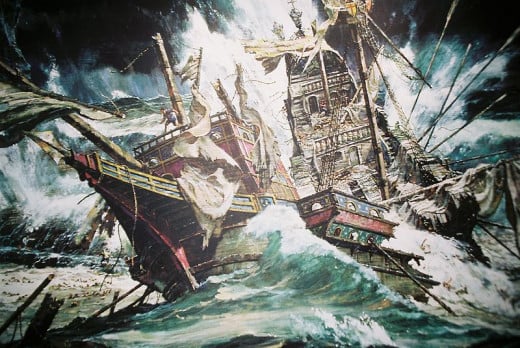
Aftermath
The Spanish had 1000 dead and 800 wounded and morale collapsed. The Duke made desperate efforts to gather his ships by signalling and then he called his remaining captains together. They failed to convince the Duke as to why they had failed to return to the Armada and he simply turned to the Provost with an icy order: ‘Hang the traitors.’ As it was they were all spared, apart from one, Don Cristobal de Avila, who was hanged from the yard arm and then his corpse, was put into a pinnace on display to restore order and discipline.
The Armada had lost the battle against the English and now, with discipline restored, made the arduous and amazing trip around the British Isles back to Spain. It was a measure of the Duke’s leadership and his men’s fortitude and toughness that so many ships made it back at all.
The Spanish Barn
